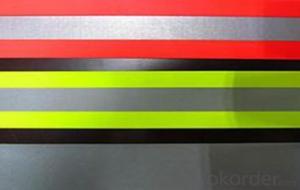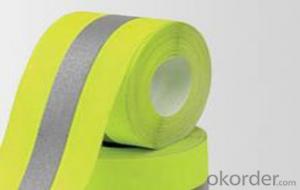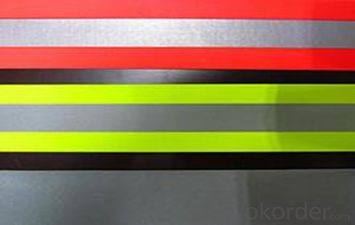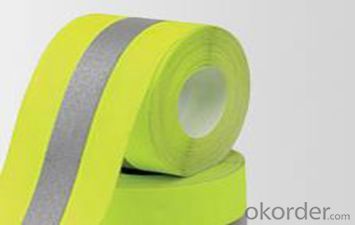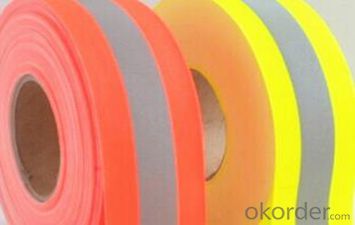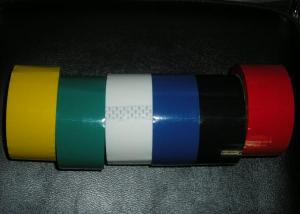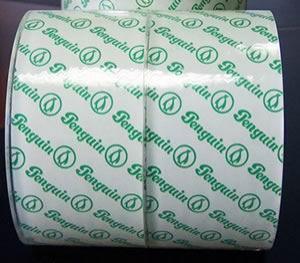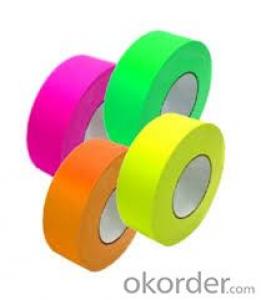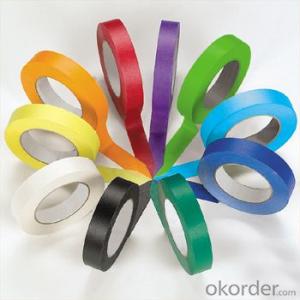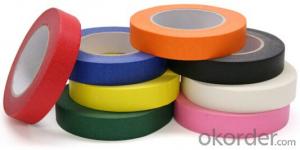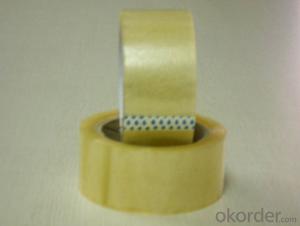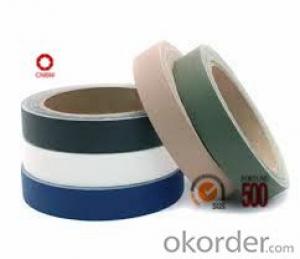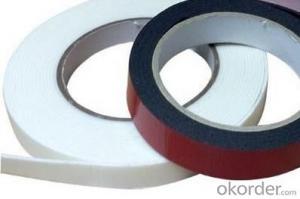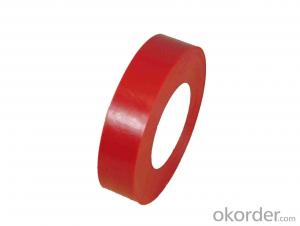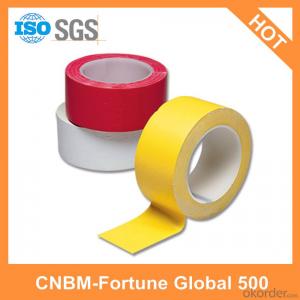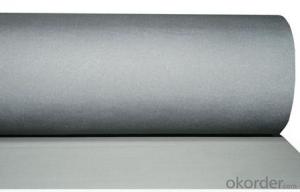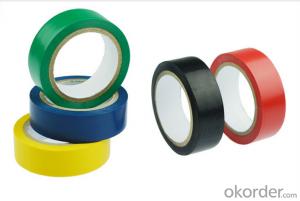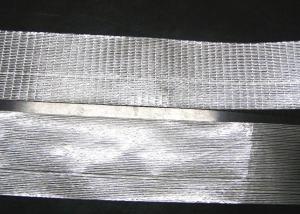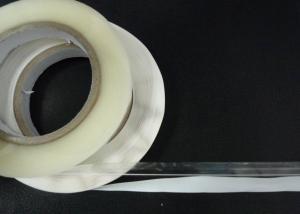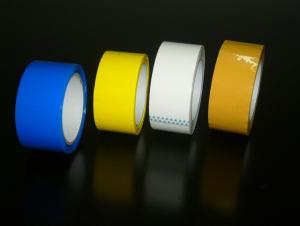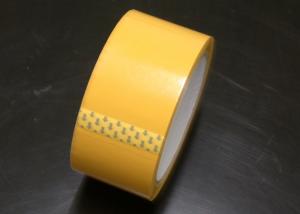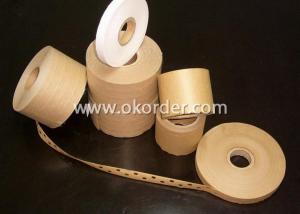Uline 1.5mil Reflective Adhesive Tape Colorful Cotton
- Loading Port:
- Tianjin
- Payment Terms:
- TT OR LC
- Min Order Qty:
- 1000 m
- Supply Capability:
- 500000 m/month
OKorder Service Pledge
OKorder Financial Service
You Might Also Like
1.Product details
| Product | 3m reflective tape colorful cotton high quality |
| reflective coefficient | >400 CPL |
| total thickness | 400--500 micron |
| Color | yellow red silver gray |
| Backing fabric | cotton |
| Certification | ISO |
| Application | high flame retardant and heat resistance,ideal for working fields of fire protection,eletrical system |
| MOQ | 2600square meters |
2.Packaging & Delivery
Packaging Details:
standard carton packaging
Delivery Detail:
Shipped in 15 days after payment
3.product show
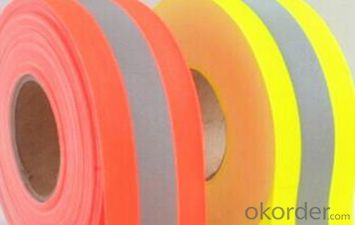
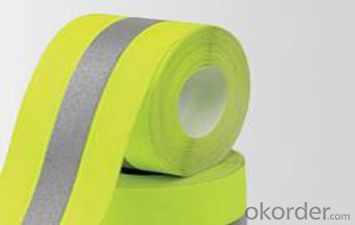
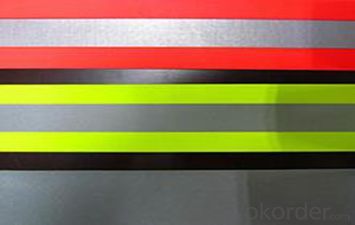
4.About us
CNBM International Cooperation is a subsidiary company of CNBM Group, which is one of the biggest state-owned company and Fortune 500 companies in the world.
All of our products are very affordable as a result of being produced in special economic development regions of China and we are more than happy to help you with the import/exportprocess too!
5.Factory and Certification
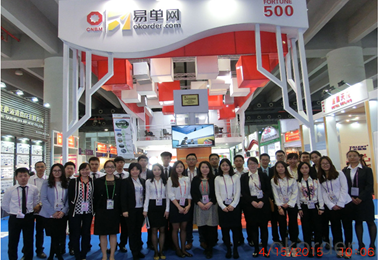
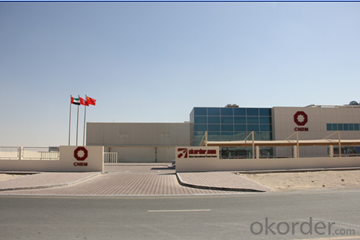
6.Our service
Quality assurance
1.On a regular basis or as per your request,we entrust national testing agencies to conduct quality inspections
2. Strictly in accordance with the ISO9001-2008 international quality system standard,we monitor and manage the whole process throughout production,quality testing,and measurement to ensure product quality
3. For quality-related construction delay or substandard construction(except for damage or losses due to customer’s responsibility or irresistible natural disasters),we have refunding,replacement,and repair services.We will respond to customers’ feedbacks on quality issues within 24 hours.
After-sales service
1.In order to provide customers with comprehensive technical support,we will provide technical and other related information upon request in a timely manner.
2.In required,we will appoint specialized technicians to the construction site to give technical trainings to construction people,and offer technical guidance throughout the whole construction process.
7.FAQ
Q: What kind of payments does jenor support?
A: T/T, L/C, Cash are accepted.
Q: Do you charge for the samples?
A: Accordeing to our company policy, the samples are free, we only charge the freight fee. And we will return the freight fee during the next order.
Q: Can you produce according to customers' design?
A: Sure, we are professional manufacturer, OEM and ODM are both welcome.
- Q: Is packaging tape transparent?
- Indeed, transparency can be found in packaging tape. Various forms of packaging tape are manufactured using clear substances like polypropylene or acrylic, which enable them to possess a see-through quality. The advantage of this transparency lies in its ability to allow users to effortlessly view the contents of a package without the need for unwrapping. Furthermore, transparent packaging tape is often favored in situations where a polished and professional appearance is desired, as it effortlessly blends with diverse packaging materials. Nonetheless, it is worth mentioning that not all packaging tapes possess transparency, as there are also options available in colored or printed variations that cater to specific purposes or branding requirements.
- Q: Does packaging tape come in different materials for specific applications?
- Yes, packaging tape does come in different materials for specific applications. One common type of packaging tape is made of polypropylene, which is a versatile material suitable for general-purpose packaging. It is strong, durable, and resistant to moisture and temperature changes, making it suitable for a wide range of applications. However, for more specialized uses, different materials may be needed. For example, if you are packaging items that require extra security or tamper-evident features, you may opt for security tape. This type of tape is often made of a thicker and stronger material, such as polyester or reinforced paper, and is designed to leave a visible mark or message when tampered with. In certain cases, you may need to use packaging tape that is specifically designed for use in extreme temperature conditions. For instance, if you are shipping goods that will be exposed to freezing temperatures, you may need to use freezer-grade packaging tape that remains adhesive and effective in low temperatures. Similarly, some applications may require tape that can adhere to difficult surfaces like corrugated cardboard or recycled materials. In such cases, you may choose a packaging tape with aggressive adhesive properties or one that is specifically formulated for adhesion on challenging surfaces. Additionally, there are also eco-friendly options available for those who prioritize sustainability. Environmentally friendly packaging tapes are often made from renewable or recycled materials and use non-toxic adhesives. Overall, the choice of packaging tape material depends on the specific needs of the application, such as security, temperature resistance, surface compatibility, or environmental considerations. It is always important to select the appropriate tape to ensure the safe and secure packaging of your items.
- Q: How does packaging tape perform on high-friction surfaces?
- Packaging tape is designed to adhere to a wide variety of surfaces, including high-friction surfaces. Its performance on high-friction surfaces can vary depending on the specific tape and the nature of the surface. In general, packaging tape is equipped with strong adhesive properties that allow it to stick securely to surfaces, even those with high friction. The adhesive on the tape is formulated to provide excellent tackiness and bonding strength, ensuring that it stays in place and maintains its hold on high-friction surfaces. However, it is important to note that excessive friction or roughness on a surface can potentially affect the tape's adhesion. If the surface is extremely rough or uneven, it may create air pockets or gaps between the tape and the surface, which can compromise its performance. In such cases, it is advisable to prepare the surface properly by cleaning and smoothing it before applying the tape to ensure optimal adhesion. Additionally, the durability of the tape can play a role in its performance on high-friction surfaces. Some packaging tapes are reinforced with fibers or have a thicker construction, making them more resistant to wear and tear caused by friction. These tapes are often recommended for heavy-duty applications or when packaging items that will be subjected to constant rubbing or sliding on high-friction surfaces. Overall, packaging tape is generally well-suited for use on high-friction surfaces. Its adhesive properties, combined with proper surface preparation and selection of a suitable tape, can ensure reliable and long-lasting adhesion, even in challenging conditions.
- Q: Does packaging tape come in different odor-free options?
- Indeed, there are various odorless alternatives available for packaging tape. Numerous manufacturers provide packaging tape explicitly crafted to be free from any scent, rendering it appropriate for utilization in delicate settings or for individuals susceptible to allergies or sensitivities towards specific aromas. Typically, these odorless choices are manufactured using materials that do not release any intense odors or fragrances, guaranteeing a neutral and enjoyable packaging experience. Before purchasing packaging tape, it is advisable to inspect the product description or labeling to confirm its odorless nature.
- Q: Can packaging tape be used for sealing plastic containers with liquids?
- Indeed, the utilization of packaging tape for sealing plastic containers holding liquids can be acknowledged. Nonetheless, it is crucial to acknowledge that packaging tape is not explicitly crafted for this task and might not offer an entirely foolproof seal. It is advisable to employ tape explicitly engineered for sealing containers with liquids, like waterproof or heavy-duty tape, to guarantee a more dependable seal and avert any probable leaks or spills.
- Q: Can packaging tape be used for sealing glass containers?
- Indeed, glass containers can be sealed using packaging tape. Packaging tapes are specifically engineered to offer a robust and reliable seal on diverse surfaces, glass included. When applied correctly, the tape adheres firmly to the glass, forming a secure seal that safeguards the container's contents. Nonetheless, it is crucial to acknowledge that not all packaging tapes are suitable for glass containers. It is advisable to utilize a tape explicitly designed for glass or a heavy-duty packaging tape with exceptional adhesive properties to guarantee an effective seal.
- Q: What are the considerations for using packaging tape on textured surfaces?
- When using packaging tape on textured surfaces, there are a few considerations to keep in mind. Firstly, the texture of the surface can affect the adhesion of the tape. Textured surfaces typically have uneven or rough areas, which may make it difficult for the tape to adhere securely. It is important to choose a packaging tape that is specifically designed for textured surfaces. These tapes usually have a stronger adhesive that can better stick to uneven surfaces, ensuring that the tape will stay in place. Another consideration is the durability of the tape. Textured surfaces can be more abrasive than smooth surfaces, which can cause the tape to wear out more quickly. It is important to select a packaging tape that is made from a durable material, such as reinforced or heavy-duty tape. These types of tape are designed to withstand more wear and tear, providing a longer-lasting bond on textured surfaces. Additionally, the texture of the surface can also affect the appearance of the tape. Since textured surfaces are not smooth, the tape may not lay flat and can create air pockets or wrinkles. This can make the package look untidy or unprofessional. To improve the appearance, it may be necessary to use extra tape or apply it in a way that smooths out any unevenness. Lastly, it is important to consider the removal of the tape from textured surfaces. Textured surfaces can make it more difficult to remove the tape cleanly without leaving behind any residue. To prevent damage to the surface or any sticky residue, it is recommended to test the tape on a small, inconspicuous area before fully applying it. If the tape does leave residue, there are adhesive removers available that can help safely remove any remaining residue. In summary, when using packaging tape on textured surfaces, it is important to choose a tape specifically designed for uneven surfaces, select a durable tape that can withstand the texture, consider the appearance of the tape on the textured surface, and be cautious of any potential residue left behind when removing the tape.
- Q: Is packaging tape safe to use on painted surfaces?
- Packaging tape is generally considered safe for use on painted surfaces, but there are a few factors that need to be taken into account. Firstly, it is crucial to make sure that the paint has completely dried before applying any tape. This usually takes about 30 days, depending on the type of paint used. Applying tape to fresh or wet paint can result in damage when the tape is removed. Secondly, the type of tape utilized can also impact the outcome. Most packaging tapes are designed to be easily removable without leaving any residue or causing harm to surfaces. However, there are some low-quality tapes or those with strong adhesives that may leave sticky residue or even strip off the paint upon removal. It is advisable to opt for high-quality packaging tape that is explicitly labeled as safe for painted surfaces. To err on the side of caution, it is always wise to conduct a test on a small and inconspicuous area of the painted surface before applying the tape extensively. This will help ensure that the tape does not cause any damage or leave any residue behind. If there are any concerns, it is recommended to consult the manufacturer's instructions or seek professional advice. In conclusion, when used correctly and on fully dried paint, packaging tape should be safe for use on painted surfaces. However, it is vital to exercise caution and select the appropriate tape to prevent any potential damage.
- Q: How does packaging tape differ from masking tape?
- Packaging tape and masking tape are distinct types of tapes serving different purposes and possessing unique traits. Specifically intended for sealing and securing packages or boxes, packaging tape finds common use in the shipping and packaging industries. It is typically constructed from robust and long-lasting materials like polypropylene or PVC, ensuring exceptional adhesion and resistance against tearing or splitting. Its notable high tensile strength guarantees the package remains securely sealed during transit or storage. Moreover, packaging tape generally boasts a potent adhesive that adheres well to various surfaces, including cardboard, plastics, and metals. It is available in different widths and lengths to accommodate diverse packaging requirements. In contrast, masking tape primarily finds application in painting and DIY projects. Composed of a thinner and less resilient material, such as crepe paper, it possesses a less aggressive adhesive in comparison to packaging tape. The primary objective of masking tape is to establish clean, straight lines and safeguard surfaces from paint or other liquids during painting tasks. Masking tape can be effortlessly applied and removed without leaving any residue or causing damage to the surface. Furthermore, it is recognized for its ability to conform to uneven surfaces, enabling precise masking and detailing work. To summarize, packaging tape is designed for secure sealing and packaging of boxes and packages, whereas masking tape is primarily utilized for painting and surface protection. Packaging tape is stronger, more durable, and possesses a more potent adhesive, whereas masking tape is thinner, more flexible, and can be effortlessly removed without leaving any residue.
- Q: Does packaging tape come in different adhesion levels for various surfaces?
- Packaging tape is available in different adhesion levels to suit various surfaces. The market offers a range of packaging tapes, each tailored to adhere to specific surfaces. For instance, there are packaging tapes with low adhesion levels, perfect for delicate surfaces like paper or cardboard. These tapes provide a strong bond without causing any damage when removed. Conversely, high adhesion packaging tapes are specially formulated to stick to rough or uneven surfaces such as plastic or metal. These tapes have a more powerful adhesive to ensure a secure hold, even in challenging environments. Moreover, there are packaging tapes with medium adhesion levels that offer versatility and can be used on a variety of surfaces. The availability of different adhesion levels allows users to select the most suitable packaging tape for the specific surface they need to adhere to, ensuring optimal performance and reliability.
Send your message to us
Uline 1.5mil Reflective Adhesive Tape Colorful Cotton
- Loading Port:
- Tianjin
- Payment Terms:
- TT OR LC
- Min Order Qty:
- 1000 m
- Supply Capability:
- 500000 m/month
OKorder Service Pledge
OKorder Financial Service
Similar products
Hot products
Hot Searches
Related keywords
